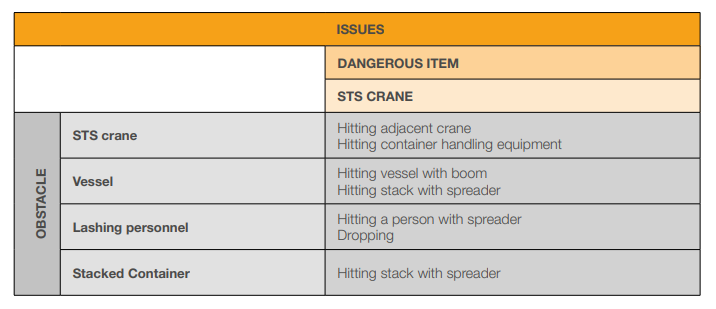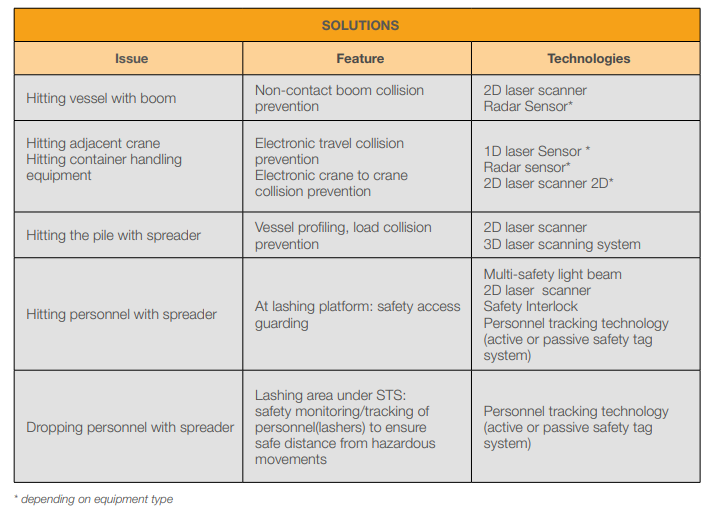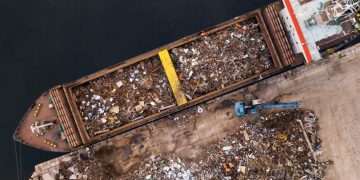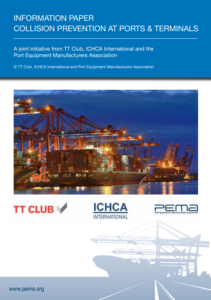TT Club, ICHCA International and the Port Equipment Manufacturers Association issued a new paper ‘Collision prevention at ports and terminals’, in a bid to improve safety, reduce injuries and loss of life, equipment damage and minimize costly business disruption at ports and terminals worldwide.
The results of this research and consultation fall under the auspices of PEMA’s Safety & Environment Committee.
Container terminals are inherently associated with potential safety risk, with vehicles and heavy equipment operating in close proximity.
There are a growing number of non-contact technologies for collision prevention that can dramatically improve equipment safety and reduce risk associated with container handling.

However, many of these are not currently included in national or international standards. This paper suggests that such technologies should be installed on new and existing equipment.
Collision prevention should be a general requirement for all equipment types. In all cases, obstacles should be monitored in the direction of travel for the full width of the equipment and its attachments.
An emergency stop should be a general requirement for all large equipment types. It is a basic safety requirement on all such machines and should be clearly labelled to identify it.
Other simple measures can be taken to segregate plant, equipment and personnel such as traffic flow marking, concrete and other barriers, signage and of course information, instruction and training. These measures are supplementary to technological solutions.

For example, to avoid collisions between the crane boom and vessel superstructure, a system for advanced object detection based on 2D laser scanners combined with a safety controller can be installed in such a way that horizontal surveillance fields are set next to/around the boom.
If any structures are detected in the surveillance fields during the crane’s gantry drive, a warning will sound as an alarm signal and/or a slowdown of movement or, in emergency cases, a stop will be generated.
Due to its multiple field sets, the laser scanner system ensures collision prevention for the boom as well as for crane-to-crane simultaneously.
Explore more herebelow:
































































